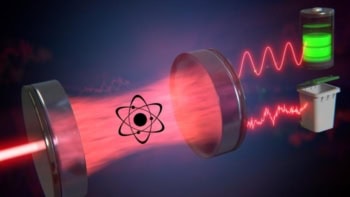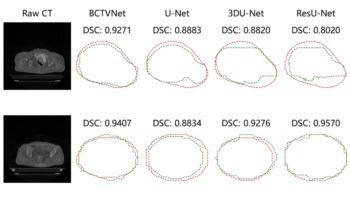Strong magnetic fields normally destroy the superconducting properties of materials. However, physicists in France have now discovered a metal that becomes a superconductor in the presence of an extremely strong field (Science 309 1343). The new work is the latest breakthrough in the growing field of quantum criticality.
Andrew Huxley and colleagues at the CEA laboratory in Grenoble and the Grenoble High Magnetic Field Laboratory (GHMFL) cooled a sample of uranium rhodium germanium (URhGe) until it became a superconductor. In the absence of a magnetic field the superconducting transition temperature, Tc, was about 280 milliKelvin. As expected Tc became smaller as the magnetic field was increased to about 2 Tesla, and the superconducting properties disappeared above this field.
However, when Huxley and co-workers increased the magnetic field to 8 Tesla, the superconducting behaviour returned. Indeed, Tc reached a value of about 400 milliKelvin before the superconductivity disappeared again at about 13 Tesla. The Grenoble team also found that URhGe experiences a phase transition between two different magnetic states at a field of 12 Tesla.
The new work is part of a growing effort to understand the properties of quantum phase transitions and quantum critical points. Ordinary phase transitions – such as the melting of ice to form water, or the transition from ferromagnetism to paramagnetism – are caused by thermal fluctuations. However, the temperature at which these transitions occur can be changed by, for example, applying pressure.
This leads to the possibility of the transition temperature being reduced to close to absolute zero to produce a quantum critical point. Although the thermal fluctuations would disappear in this case, quantum fluctuations would remain and should be capable of inducing quantum phase transitions between different types of magnetic order or between normal and superconducting states. It is also possible that the quantum critical point might influence the room-temperature behaviour of these materials.
Novel forms of magnetic order have been observed at low temperatures and under high fields or pressures before, and superconductivity has been observed near quantum critical points in several materials. However, the latest result comes as a surprise because strong magnetic fields normally destroy the superconducting state.
The breakthrough was made possible, says Huxley, by the availability of high-quality single crystals of URhGe and high magnetic fields at the GHMFL. The D23-CRG instrument at the ILL neutron source in Grenoble was also used to probe the magnetic transition. The next challenge, he says, is to understand more about the superconductivity. For instance, is the same mechanism responsible for both superconducting regions in URhGe?



